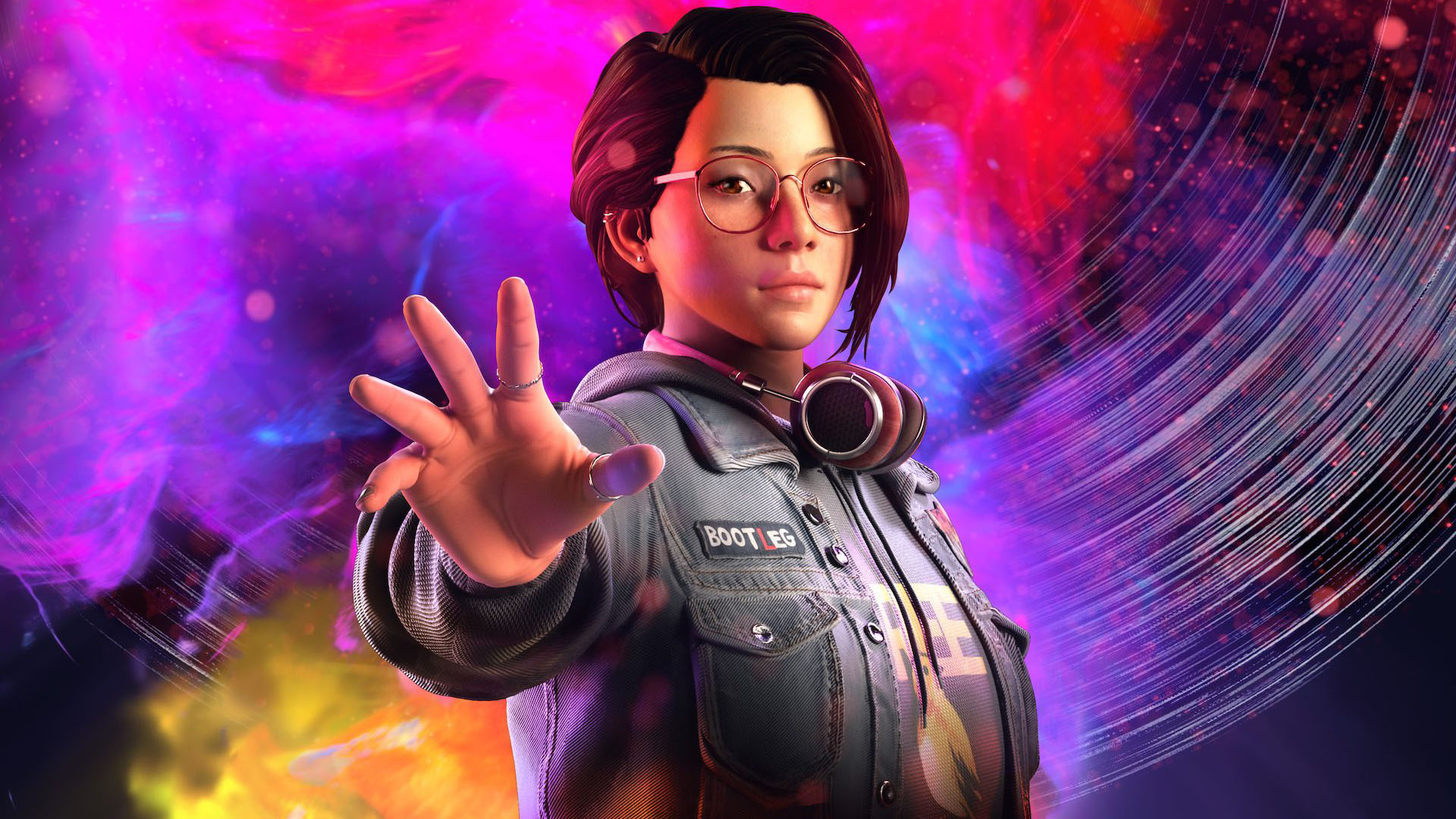
The original Life is Strange was intended to be a narrative driven coming-of-age adventure game. It stood out due to its painterly visuals, and unlike other story driven adventure games, it also had a unique gameplay gimmick that endowed the protagonist with a time rewind super power.
While Life is Strange did commit the all too common adventure game sin of constantly shunting the player forward, it did offer some opportunity to explore at your own pace, and use the rewind powers in creative ways. What held the game back was a terrible episodic release structure; a trend that thankfully died out in the mid 2010s.
Life is Strange: True Colors is a complete title without the limitations of a monthly release schedule, and explores the possibilities of a new protagonist with the ability of “super” empathy. Just how will these powers come into play when it comes to solving the mystery of the Typhon mining corporation cover up?
Life is Strange: True Colors
Developer: Deck Nine
Publisher: Square Enix
Platforms: Windows PC, Nintendo Switch, PlayStation 4, PlayStation 5 (reviewed), Xbox One, Xbox Series X|S, Google Stadia
Release Date: September 10, 2021
Players: 1
Price: $59.99 USD
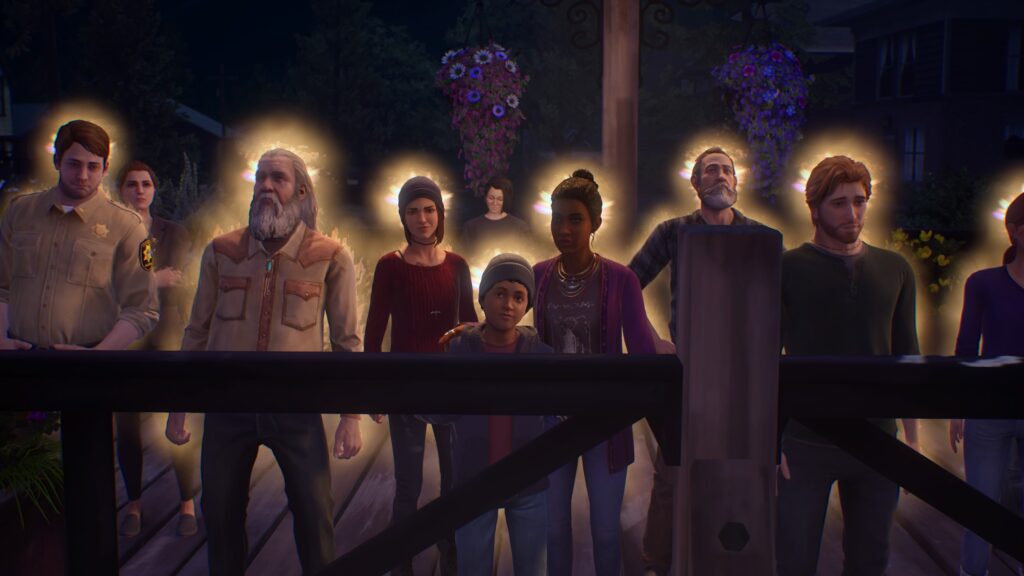
Life is Strange: True Colors had an opportunity to greatly expand on the small quirky American town angle that has served as the foundation of this series. Despite forgoing the episodic release format, it wastes it by adhering to the same structure, and is far more limited than prior games.
Maybe it was due to budgetary restrictions, but True Colors‘ story is incredibly basic and predictable. This is due to the extremely small cast and setting. The narrative barely has any breathing room to allow players to get immersed in the town of Haven, and its limited scope makes it feel unconvincing.
This didn’t need to be an open world, but True Colors‘ little Colorado town needed to be further realized. There is one street that most of the game is set on; Alex’s crappy apartment above the bar, the bar proper, a record store, a flower shop, and a smoke shop are the only locations that can be freely explored. There are a handful of one-time visit settings, but usually there is little to no agency when engaging these places.

Life is Strange: True Colors wastes no time early on with a very obvious red herring. The true antagonist can be easily figured out without any half-assed psychic empathy abilities. Even when ignoring the admittedly clever foreshadowing; by process of elimination it becomes very apparent where the story will be heading.
What is also frustrating is that Alex’s powers are poorly defined, and are expanded when it’s convenient for the writer. Her abilities come and go, and the writers do not commit to the possibilities. It’s established early on that Alex sees color-coded “auras” that represent an emotional state of being; but only if the emotion is “strong enough.” What this means is vague and inconsistent with several of the events that unfurl.
Alex is basically a psychic, sometimes, and can read people’s thoughts based on their feelings. She is able to prove her powers this way by telling people what they are thinking of. Alex should be able to solve the mystery and prove it to others with ease. but the story drags itself out with false promises and anticlimaxes.
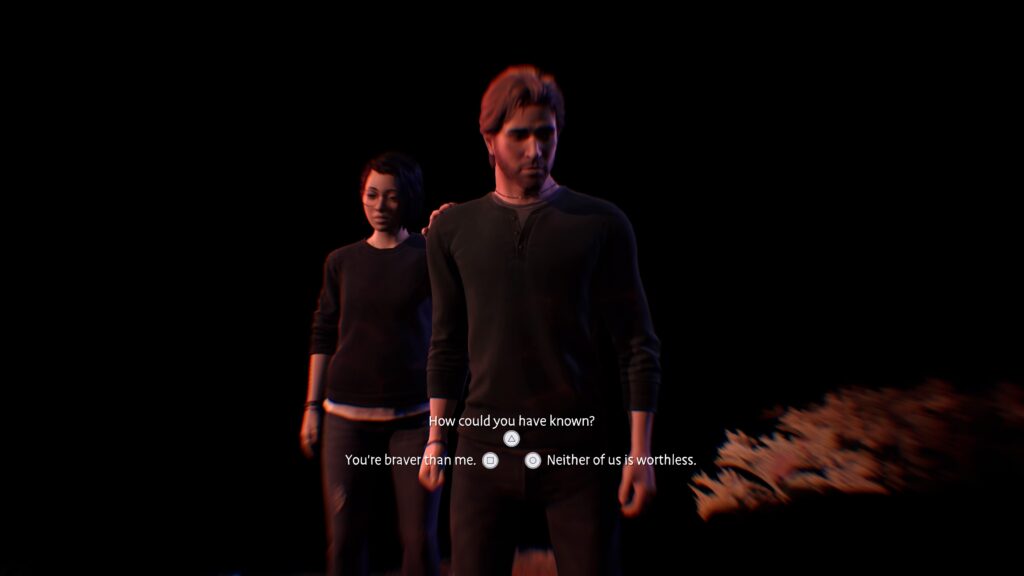
At one point, a very interesting aspect of Alex’s power is introduced that involves her absorbing a person’s emotional state, but with the game threatening some kind of possible consequence. The pay-off to this is shockingly underwhelming, and may not as well have been in the game at all.
In the original Life is Strange, Max using her rewind ability came with a terrible trade off where she would get nosebleeds, and would suggest something worse the more she used it. True Colors never has any stakes like this. The worst thing that can happen is that Alex will feel something.
What the game does do well is offer plenty of amusing distractions, to make what can laughingly be called gameplay feel more varied. Throughout the story are opportunities to partake in several mini-games of varying complexity. Some are Yakuza-style arcade games such as the platformer-style Pac-Man knock-off or a port of Arkanoid, to playing some poorly coded Unreal 4 foosball.
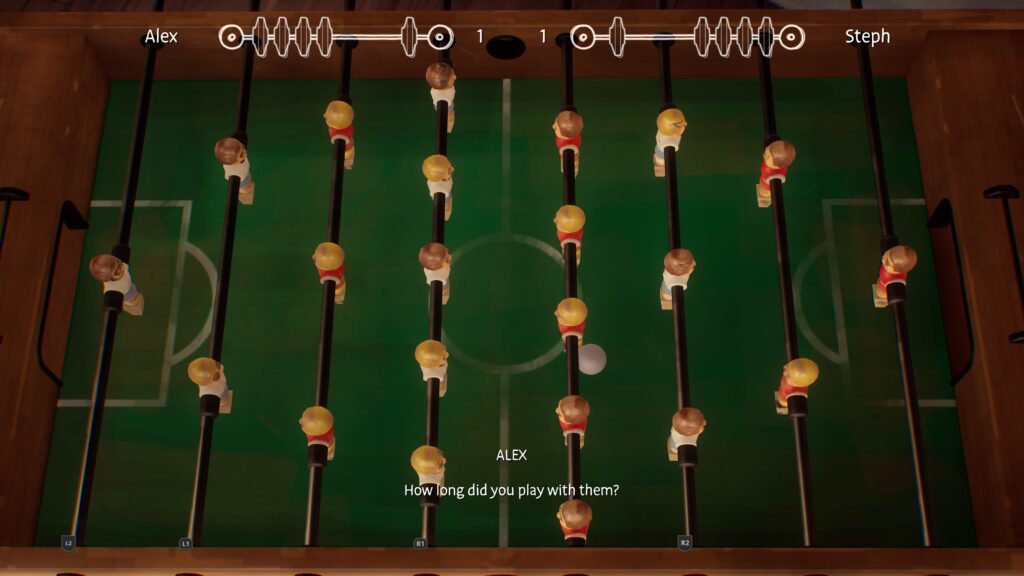
Out of all the distractions, the most impressive one involves a necessary sequence involving Alex and the town urchin participating in a town-wide live action role-play. The entire chapter plays out with the entire cast of characters dressing up in home made ye olde costumes, and the gameplay takes on the trappings of an RPG.
It’s adorable how True Colors is able to allow itself to use its very limited mechanics to become like a turn-based RPG; with items, spells, and special attacks. What’s especially impressive is the range of options players have when it comes to the events of the LARP. Alex can approach the scenarios in many different ways, depending on player choice.
Nowhere else in the game does this level of freedom and flexibility come to dealing with situations; and it happens to be during a fake RPG. At times it evokes flashbacks of Like a Dragon due to how a modern day setting incorporates traditional RPG mechanics and tropes. It’s too bad True Colors couldn’t commit to this style of gameplay. This was the most memorable and enjoyable sequence in the entire game.
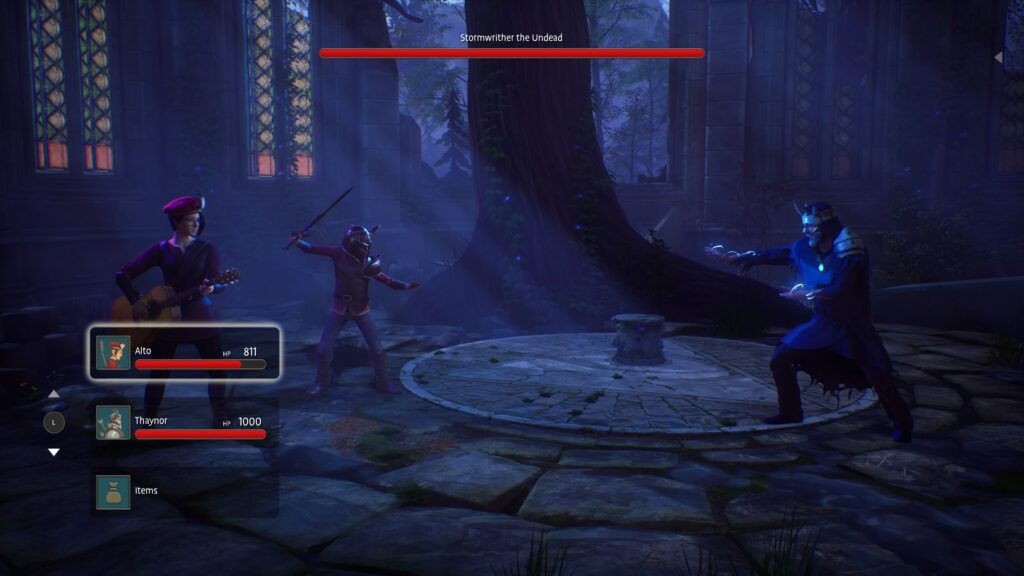
While the cast of characters are very few, the game does an excellent job at making each one count. Facial detail and animation is very natural and convincing. Small details and nuances in character performances are painstakingly animated, and go a long way in making players get invested in the drama.
The performances and direction has come a long way since the skin-crawling and embarrassing dialogue from the first Life is Strange. Every character feels real and believable, which helps players connect with the scenarios. The only blemish on the performances is the writer’s need to add as much quippy dialogue as possible in Alex’s inner monologue.
Alex is able to comment on all kinds of objects in the environment. This is a staple of the series, and adds a bit of flavor to the overall atmosphere and tone of every scene. Most of the time Alex’s thoughts are inane, contribute nothing, and usually are trying to be funny. Alex is not funny or witty. It’s enough to make players avoid investigating points of interest.
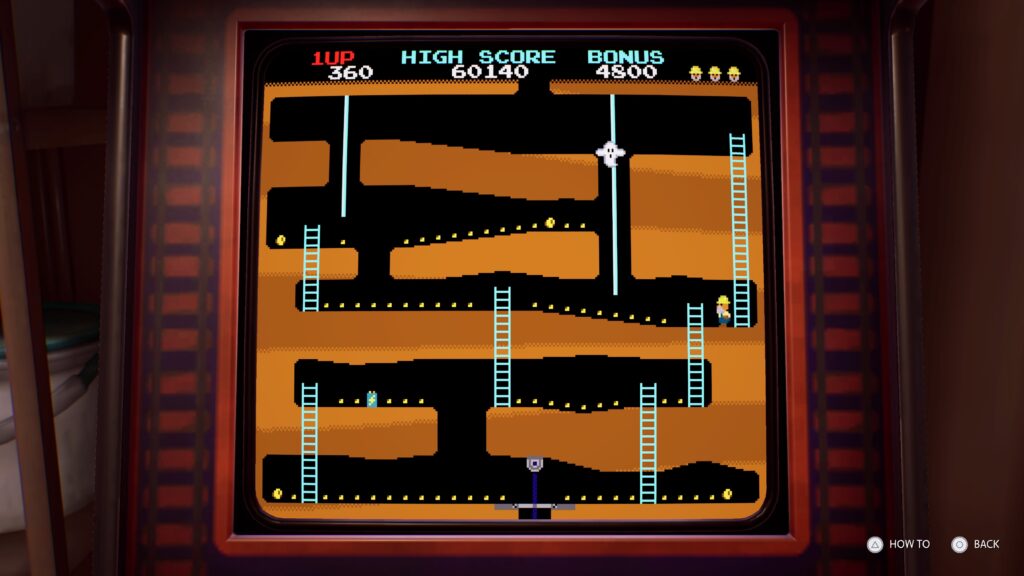
Life is Strange: True Colors is the most polished looking entry so far, but it is still as rough as the rushed episodes that had to be released on a tight schedule. Even on the PlayStation 5 version, the frame rate is highly erratic while walking around an extremely small town. Load times are uncomfortably lengthier than they should be for a low spec Unreal Engine 4 game.
Being poorly optimized is not even the biggest flaw in True Colors‘ technical aspects; there are some nasty visual bugs that occur between camera cuts. Objects won’t load in properly, and sometimes character models will be in their A-pose for a second before they snap into their intended position.
The ending scenes were especially rough, with transitions to empty sets with the game re-loading itself the same instant. It’s like True Colors had to call a mulligan on itself when trying to load up the correct models, because it needed more time to calculate the correct choices in order to draw the necessary models.
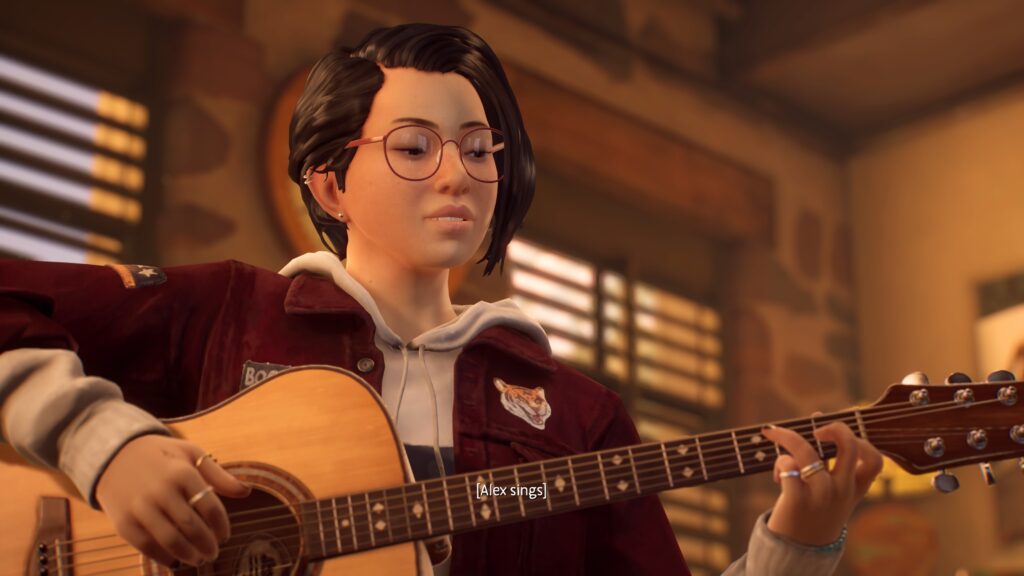
Life is Strange: True Colors is not the kind of game that is repayable. The story is extremely limited in scope, and the conclusion is rushed. The best moments are the first three chapters; where there are enough gameplay gimmicks to keep the scenario interesting, and Alex’s powers are put to good use.
The writers pushed themselves into a corner and could not deliver a satisfying climax. The finale relies heavily on extremely convenient turn of events, and revelations that are unearned and not set up at all. Everything wraps itself up too neatly and unbelievably.
Life is Strange: True Colors still feels like a low budget and rushed episodic released adventure game. The premise is not fully realized, and it never reaches its full potential. For a full priced game, there is not enough substance; and the best parts in this package are a short RPG and a decent port of Arkanoid.
Life is Strange: True Colors was reviewed on PlayStation 5 using a review code provided by Square Enix. You can find additional information about Niche Gamer’s review/ethics policy here.